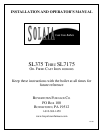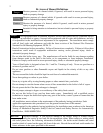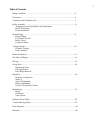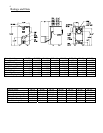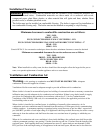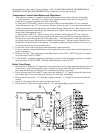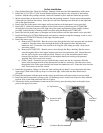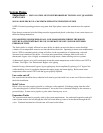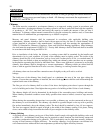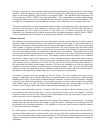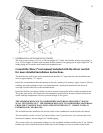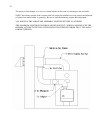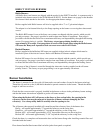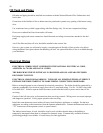
5
Installation Clearances
Boilers in rooms shall be installed with the clearances from combustible materials not
less than indicated below. Combustible materials are those made of or surfaced with wood,
compressed paper, plant fibers, plastics, or other material that will ignite and burn, whether flame
proofed or not, or whether plastered or not.
WARNING
The boiler must not be installed on combustible flooring. The boiler is approved for installation on
non combustible flooring only. The boiler must not be installed on carpeting or vinyl flooring
Minimum clearances to combustible construction are as follows:
TOP - 24 IN.
FRONT - 12 IN.
FLUE CONNECTOR SINGLE WALL VENT PIPING - 9 IN.
FLUE CONNECTOR DOUBLE WALL INSULATED DIRECT VENT PIPING – 2”
REAR - 2 IN.
SIDES - 2 IN.
Consult NFPA-31 for construction techniques where the above minimum clearances cannot be obtained
Minimum recommended clearances for service and access are as follows:
TOP - 24 IN.
FRONT - 24 IN. FROM BUNER
FLUE CONNECTOR - 9 IN.
REAR - 18 IN.
SIDES - 12 IN.
Note: When installed in a utility room, the door should be wide enough to allow the largest boiler part to
enter, or to permit replacement of another appliance such as a water heater.
Ventilation and Combustion Air
Warning…
Air openings to combustion area MUST NOT BE OBSTRUCTED. Adequate
combustion air must be supplied at all times.
Ventilation of boiler room must be adequate enough to provide sufficient air for combustion.
When a boiler is located in an unconfined space in a building of conventional frame or masonry construction
infiltration may provide adequate air for combustion and ventilation. If there is any doubt, install air supply
provisions for combustion and ventilation in accordance with section 5.3, Air for Combustion and
Ventilation, of the NFPA54 1988 code, it is recommend that you follow, the applicable provisions of the
local building codes as well.
When a boiler is installed in a confined space, in a building of unusually tight construction, air for
combustion and room ventilation must be obtained from the outdoors or from spaces freely communicating
with the outdoors. A permanent opening or openings having a total free area of not less than 1 square inch
per 5,000 BTU per hour of total input rating of all appliances shall be provided. Ducts may be used to convey
make-up air from the outdoors and shall have the same cross-sectional area of openings to which they are
connected.
When air for combustion and room ventilation is from inside buildings, the confined space shall be provide
with two permanent openings, one starting 12 inches from the top and one 12 inches from the bottom of the
enclosed space. Each opening shall have a minimum free area of 1 square inch per one thousand (1,000)
BTU per hour of the total input rating of all appliances in the enclosed space, but must not be less than one



